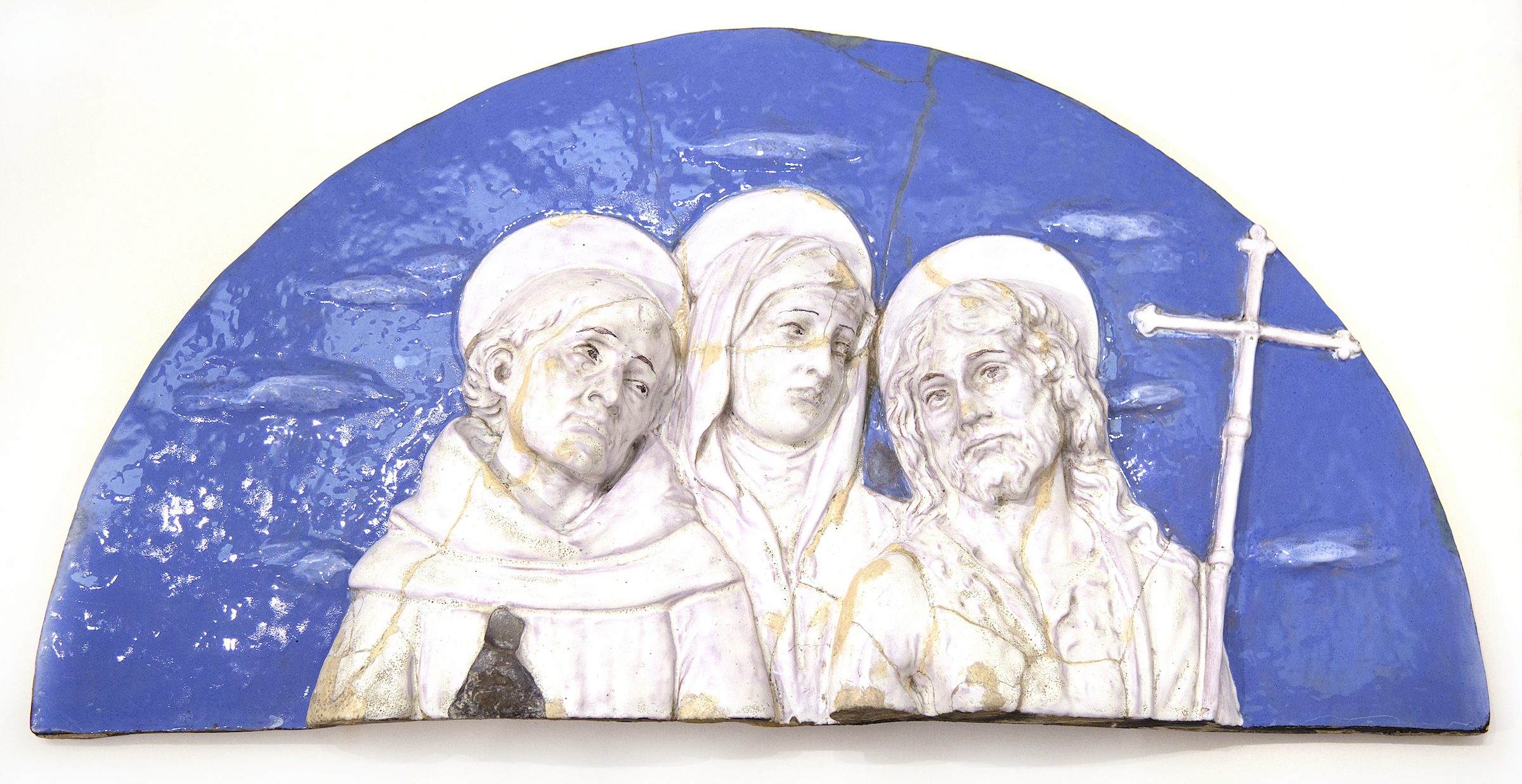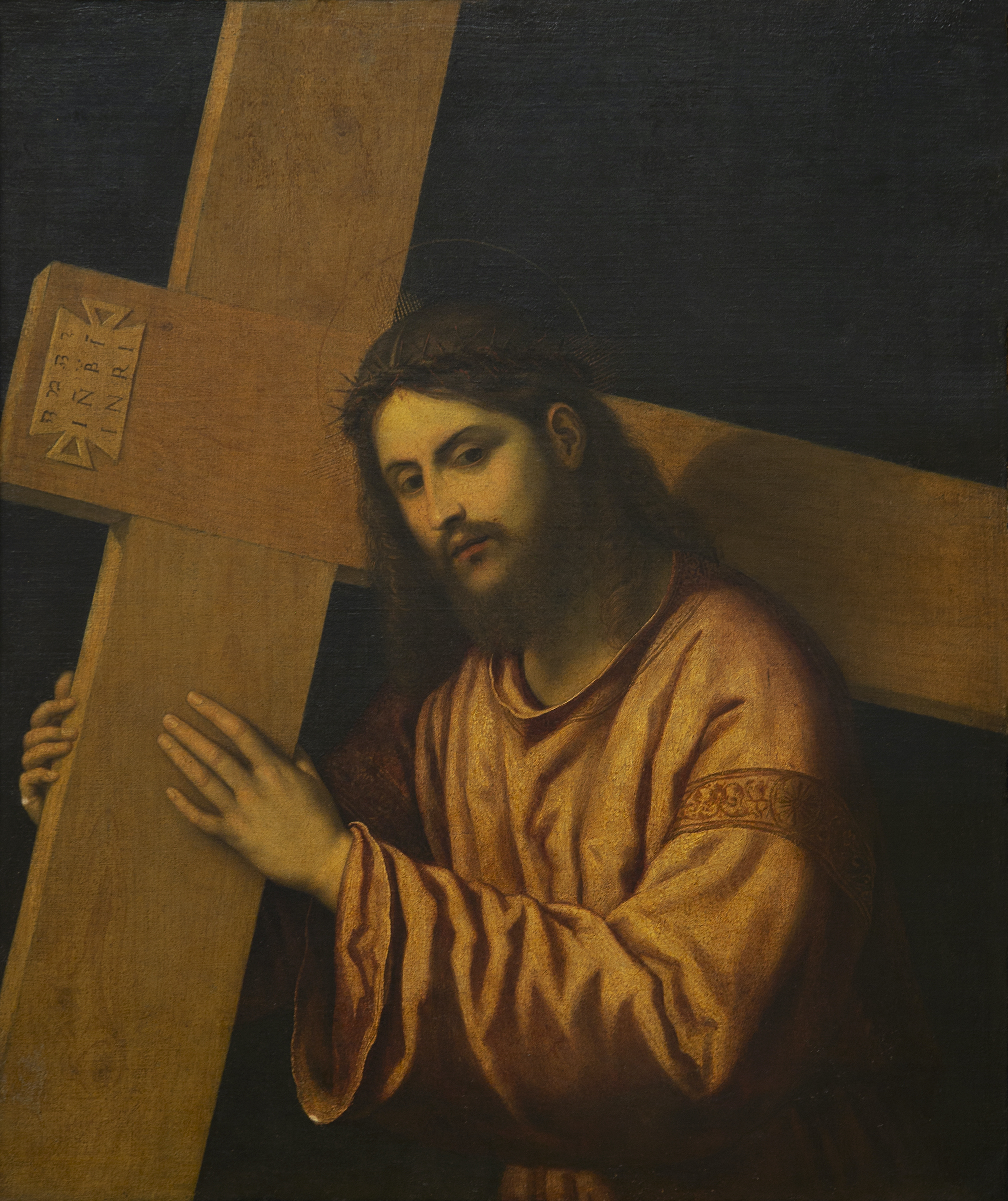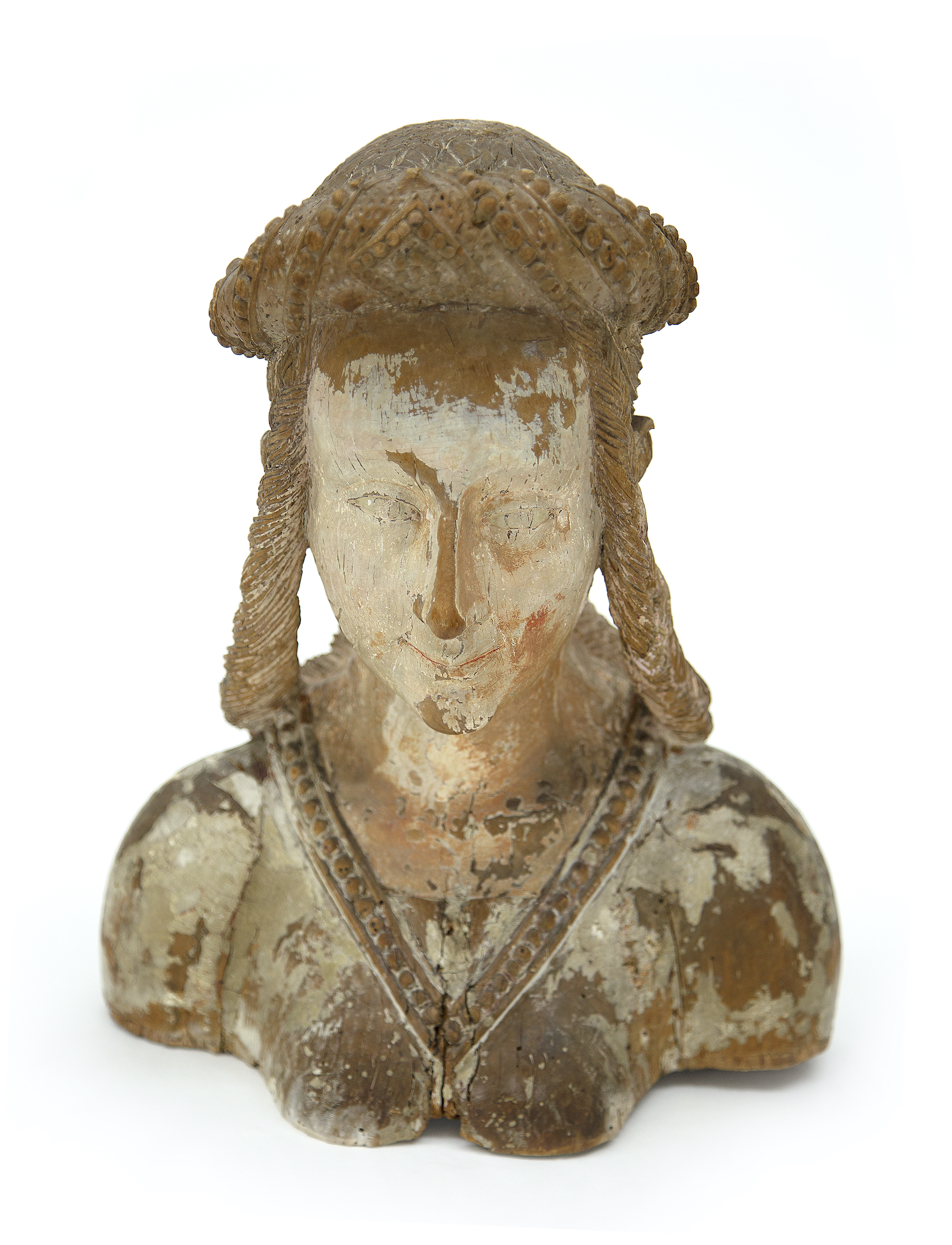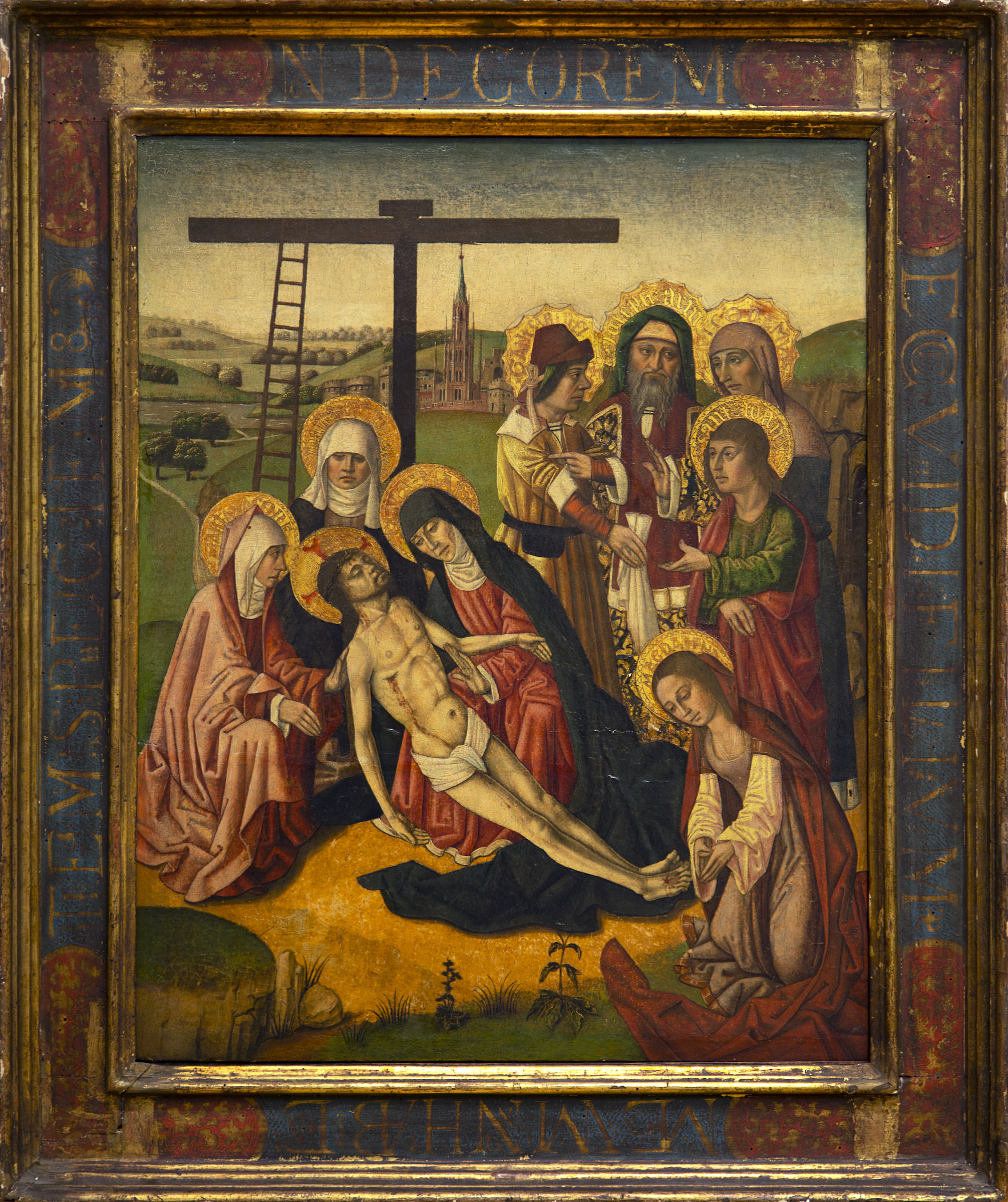Typically, objects of devotion such as busts or sculptures, were often created in a non-individualized, simple format to appeal to the largest group of often uneducated worshippers, especially during early history through the Middle Ages. An exception is the Reliquary Bust, by an anonymous artisan, of polychromed and carved wood. The delicacy and detail of the braided hair, headdress, and garment gives the viewer the impression that we are looking at a saint that might have lived in the world as a young woman. Her serene presence makes us remember that a reliquary was designed to hold holy remnants for prayer, and the chamber that held those remnants can be seen in the back of the work, though she is designed to be seen from below as she gazes down on us. Bordone’s Christ Carrying the Cross emphasizes the youthful, sweet nature of Christ in rendering the soulful facial features and sensitive hands. There is light focused on his face and figure as the artist wishes to convey hope, even while bearing the burdensome wooden cross, which fills the frame, against a dark, foreboding background.
Workshop of Andrea della Robbia | Paris Bordone | Reliquary Bust | Figure of Papal Saint | Nicolas Froment
Workshop of Andrea della Robbia
Lunette of Madonna between Saints Francis and John, c.1460 to 1520
Florence, probably last quarter 15th c.
Terracotta, glazed
Gift of Mr. and Mrs. Benjamin H. Namm, 59.167
Paris Bordone
Venetian School
Christ Carrying the Cross, c. 1530
Oil on linen
Gift of Dr. And Mrs. Joseph Schoneman, 57.41
Reliquary Bust
Netherlands, early 16th century
Polychromed and carved wood
Gift of Mr. and Mrs. Jack Linsky, 64.22
Figure of Papal Saint, c. 1500-1600
Wood, pigment, and gold leaf
Gift of the Class of 1958, 59.134
Attributed to Nicolas Froment
Lamentation, 15th century
Oil on panel, transferred to linen
Gift of Mr. and Mrs. Jack Linsky, 57.2
Images by Jacqui Hopely Monkell





